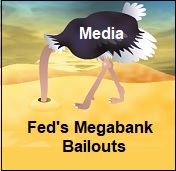-
Recent Posts
- Trump’s “Big Beautiful Bill” Is a Grotesque Giveaway to Fossil Fuel Billionaires While Adding $3.3 Trillion to Nation’s Debt
- Senator Chris Murphy Charges that Trump “Has Opened a Channel for Bribery”
- Congressman Casten: Trump’s Assault on the Rule of Law Is Causing Capital Flight Out of U.S. by Foreign Investors
- Trump’s Approval Rating Drops to 80-Year Low; IMF Says U.S. Tariffs Now Exceed the Highs During the Great Depression
- Nasdaq Has Lost More than 3,000 Points Since Trump’s First Full Day in Office in 2025; the Pain Has Barely Begun
- The Bond Crisis Last Week Was a Global No-Confidence Vote in U. S. President Donald Trump
- Trump’s Tariff Plan Guts $5 Trillion in Stock Value in Two Days; Senator Warren Calls for Emergency Action Before Markets Open on Monday
- Trump’s Attacks on Big Law, Universities, and the Media Have a Common Goal: Silence Dissent Against Authoritarian Rule
- Trump Administration Gives All Clear to Laundering Money through Shell Companies and Bribing Foreign Officials
- Four Megabanks on Wall Street Hold $3.2 Trillion in Uninsured Deposits – Which May Explain Senator Schumer’s Pivot to the GOP to Stop a Government Shutdown
- Here’s What Came Crashing Down Yesterday for Trump’s “Genius” Guy, Elon Musk: Tesla Stock, Access to Twitter (X), His Years of Secret Calls with Putin
- After Banning the Associated Press, Trump Is Now Targeting Specific Journalists That He Wants to See Fired
- Closely Watched Atlanta Fed Model Predicts Negative U.S. Growth in First Quarter
- Trump’s Gangster Diplomacy Makes Front Page Headlines Around the Globe
- Who Benefits Alongside Elon Musk If He Succeeds in Killing the CFPB: the Megabanks on Wall Street that Underwrite His Tesla Stock Offerings
- In Trump 1.0, the State Department Used Taxpayer Money to Publish a Book Elevating Elon Musk to a Superhero; It Was Funded by USAID, the Agency Musk Wants to Quickly Shut Down
- News Host Joy Reid Raises Threat of Trump Selling U.S. to Putin; Ten Days Later Her Show Is Cancelled
- Elon Musk’s DOGE Appears to Be Violating a Court Order; It Has Taken Down Hundreds of YouTube Videos that Educate Americans on How to Avoid Being Swindled
- Barron’s Releases Audio of Jamie Dimon Cursing Out His Workers at a Town Hall, as Dimon Plans to Dump Another One Million JPM Shares
- There’s One Federal Investigative Agency that Neither Trump nor Elon Musk Can Touch: It Just Opened an Investigation into DOGE
- Elon Musk’s Companies Were Under Investigation by Five Inspectors General When the Trump Administration Fired Them and Made Musk the Investigator
- Donald Trump Gives the Greenlight to Goldman Sachs and JPMorgan Chase to Return to Bribing Foreign Officials
- After Tech Geeks Built a Back Door to Loot Billions from FTX, Republicans Refuse to Investigate What Elon Musk’s Tech-Squad Did Inside the U.S. Treasury’s Payment System
- Former Prosecutor, Now U.S. Senator, Informs Tesla That CEO Musk May Be Violating Federal Law and to “Preserve All Records”
- Trump’s Hedge Fund Guy Is Now Overseeing the U.S. Treasury, IRS, OCC, U.S. Mint, FinCEN, F-SOC, and the Consumer Financial Protection Bureau
- As Elon Musk Begins Shutting Down Payments to Federal Contractors, a Strange Money Trail Emerges to His Operatives Inside the U.S. Treasury’s Payment System
- JPMorgan Chase Charged by Yet Another Internal Whistleblower with Cooking the Books
- We Asked Google’s AI Search Model, Gemini, Questions About the Fed and Wall Street Megabanks: It Got the Answers Dead Wrong
- With Trump and Melania’s Crypto Coins Likely to Raise Legal Challenges, Why Didn’t Trump Fire the SEC’s Inspector General in His Purge of IGs?
- Fossil Fuel Industry Could End Up Paying Tens of Billions for LA Wildfires and Deceiving the Public on Climate Change for Decades
- It’s Being Called the Biggest Grift by a President in U.S. History: Trump and First Lady Launch their Own Crypto Coins
- Trump Plans to Install a Fracking CEO to Head the Energy Department and Declare a National Emergency on Energy to Gain Vast Powers
- Fossil Fuel Money Played a Role in the Los Angeles Fires and the Push to Install Pete Hegseth as Secretary of Defense
- When It Comes to Wealth Retention in Retirement, Concrete May Be the New Gold
- Wall Street Watchdog Warns “Clock Is Ticking on a Coming Catastrophic Financial Crash”
- Wall Street Is Sending the Same Message to Americans on Fossil Fuel Financing that It Sent on Cigarettes: Drop Dead
- In a Six-Week Span, this Dark Pool with a Curious Past Traded 3.7 Billion Shares
- Wall Street’s Lobby Firm Hired Eugene Scalia of Gibson Dunn to Sue the Fed for Jamie Dimon
- Postmaster General Louis DeJoy Made $561,051 in Compensation in 2024, as Mail Costs Spiked and Delivery Deteriorated
- Fed Chair Jay Powell Sends a Bold Message to Trump and Tanks the Dow by 1123 Points
- The Head of Fixed Income at T. Rowe Price Makes the Scary Case for the 10-Year Treasury to Spike to 6 Percent
- $663 Billion in Cash Assets Have Gone Poof at the Largest U.S. Banks
- Donald Trump to Ring Bell at New York Stock Exchange Today as Hit List Posters Appear in Manhattan Targeting Wall Street CEOs
- Trump Has a Slush Fund to Prop Up the Dollar – Will He Use It to Prop Up Bitcoin Instead?
- A CEO Assassination; a Billionaire Heiress/NYPD Commissioner; a Secret Wall Street Spy Center – Here’s How They’re Connected
- Despite More than 1600 Tech Scientists Signing a Letter Calling Crypto a Sham, Trump Names a Crypto Cheerleader for SEC Chair
- The Fed Rings a Warning Bell: Hedge Funds and Life Insurers Are Reporting Historic Leverage
- Trump’s Nominee for FBI Director, Kash Patel, Has Businesses Financially Intertwined with Trump
- Donald Trump Is at Risk of Getting Named in a Fossil Fuels Conspiracy Lawsuit
- Trump Is Having Difficulty Getting a Lawyer to Accept the Nomination for SEC Chair: Here’s Why
Search Results for: JPMorgan
Jamie Dimon’s House of Frauds Is the Target of More than 200 Investigations, Costing $2 Billion in Legal Expenses in Less than Two Years
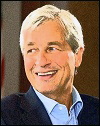
By Pam Martens and Russ Martens: November 4, 2024 ~ The largest bank in the United States, JPMorgan Chase, has a rap sheet that rivals that of a crime family — and those crimes show no signs of slowing down. The financial institution is, in effect, a criminal enterprise in drag as a federally-insured banking powerhouse. The facts backing the above assertions are so strong that two trial attorneys, Helen Davis Chaitman and Lance Gotthoffer, wrote a book in which they compared the bank to the Gambino crime family and suggested JPMorgan Chase should be charged under the Racketeer Influenced and Corrupt Organizations Act (RICO). The authors wrote at the time on their website that “The pattern is clear. JPMorgan Chase has a culture — like the mob — where anything goes so long as it is profitable. This is precisely the kind of pattern of criminal activity that RICO was intended to … Continue reading
New York Fed Report: 27 Percent of Bank Capital Is “Extend and Pretend” Commercial Real Estate Loans

By Pam Martens and Russ Martens: October 31, 2024 ~ The New York Fed, long the quintessential keeper of secrets for the Wall Street megabanks that it has been bailing out since the financial crisis of 2008, has suddenly decided to come clean on a big threat to capital at these and other banks. The New York Fed has created gasps in the corridors of power in the banking world by releasing a paper that documents how banks have ginned up their capital by “extending and pretending” on their underwater commercial real estate (CRE) loans. The new paper was written by Matteo Crosignani, Financial Research Advisor at the New York Fed, and Saketh Prazad, a former Research Analyst at the New York Fed who is now a Doctoral Student in the Business Economics program at the Harvard Business School. The authors get right to the crux of the matter on page two of … Continue reading
Academic Paper Finds U.S. Banking System Is Less Safe Today than Before the 2010 Dodd-Frank Financial Reform Legislation Was Passed

By Pam Martens and Russ Martens: October 22, 2024 ~ Four researchers at the University of Westminster School of Finance and Accounting in London have taken a hard look at the much-touted Dodd-Frank financial reform legislation in the U.S. that was signed into law by President Barack Obama in 2010. The voluminous 848-page bill followed the greatest financial crash in the U.S. since the Great Depression. Unfortunately, it was big on word count and short on iron-clad reforms, leaving the implementation of final rules to be negotiated by revolving-door regulators and an army of Wall Street lobbyists and lawyers. (For how that has played out over the ensuing 14 years, see here, here, here and here.) The authors of the study are Dr. Julie Ayton; Professor Abdelhafid Benamraoui; Dr. Huyen (Trang) Ngo; and Dr. Stefan van Dellen. They define the purpose of the study as follows: “The research paper tests two critical … Continue reading
Jerome Powell’s Fed Notches an Historic Record of $204 Billion in Cumulative Operating Losses – Losing Over $1 Billion a Week for More than Two Years
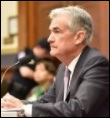
Commentary Next to Arrows Has Been Added by Wall Street On Parade. By Pam Martens and Russ Martens: October 21, 2024 ~ According to its own FRED data, the last time the central bank of the United States – the Federal Reserve – operated in the green was September 14, 2022, more than two years ago. Since then, it has been consistently losing over $1 billion a week with its cumulative operating losses now topping $204 billion as of the last reporting by the Fed on October 16, 2024. Operating losses of this magnitude are unprecedented at the of Fed, which was created in 1913. If a publicly-traded company had been bleeding operating losses of more than $1 billion a week for more than two years, there would very likely be a change of leadership at the top. But Fed Chair Jerome Powell is no ordinary mortal. He survived the worst trading … Continue reading
Could Big Tech Own Federally-Insured Banks? Here Are the Dangers

By Pam Martens and Russ Martens: October 17, 2024 ~ The risk of Big Tech firms like Alphabet (Google), Amazon, Apple, Meta (Facebook), and Microsoft getting an entrée into the federally-insured banking system by being allowed to buy or create a federally-insured industrial bank has raised alarm bells among three nonprofit watchdogs and the law professor who, literally, wrote the book on the mushrooming systemic risks in the U.S. banking system. Arthur E. Wilmarth, Jr., Professor Emeritus of Law at George Washington University Law School, joined with the Consumer Federation of America, Americans for Financial Reform Education Fund, and the Center for Responsible Lending, to file an 18-page letter last Friday with the Federal Deposit Insurance Corporation (FDIC). (For background on Wilmarth’s seminal book, see our report: Everything this Book Predicted on Wall Street Megabanks Ruling their Regulators Is Now Unfolding.) Friday’s letter was in response to the FDIC’s proposal to … Continue reading
A Bank Regulator Provides a Frightening Look at the Trading Casino Jamie Dimon Has Built Inside His Federally-Insured Bank

By Pam Martens and Russ Martens: October 7, 2024 ~ On September 24, the Office of the Comptroller of the Currency (OCC) released its Quarterly Report on Bank Trading and Derivatives Activities for the second quarter of this year. The OCC is the federal regulator of banks that operate across state lines, which are known as “national banks.” The shorthand for this report should be the “Casino Report.” Increasingly, the report showcases how much dangerous trading activity the brokerage firms on Wall Street have been able to muscle into their federally-insured banking units where the deposits of millions of average Americans reside. Since the repeal of the Glass-Steagall Act in 1999 under the Bill Clinton administration, Wall Street trading firms have been allowed to combine with federally-insured banks – creating an endless series of crises and bailouts. No bank has been able to blur the lines between a trading casino and … Continue reading
Wall Street Has Moved Vast Sums of Its Trading to Its Federally-Insured Banks

By Pam Martens and Russ Martens: September 23, 2024 ~ Taxpayer-backstopped federal deposit insurance at commercial banks in the U.S. was never meant to be a get-rich scheme for the wild and voracious appetites of traders on Wall Street. But a quarterly report produced by the federal regulator of national banks – those operating across state lines – shows that vast amounts of trading on Wall Street is now taking place inside the federally-insured commercial banks that are owned by the trading powerhouses on Wall Street: JPMorgan Chase, Goldman Sachs, Citigroup and Bank of America. (Wall Street trading houses have been allowed to own federally-insured banks since the repeal of the Glass-Steagall Act in 1999 under the Wall Street friendly Bill Clinton administration.) For decades, the Office of the Comptroller of the Currency (OCC) has published its “Quarterly Report on Bank Trading and Derivatives Activities.” The reports have shown that the … Continue reading
The Stock Market Had a Psychotic Episode After the Fed Rate Cut Yesterday, Plunging 479 Points from the Day’s High
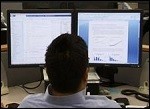
By Pam Martens and Russ Martens: September 19, 2024 ~ The Federal Reserve yesterday cut its benchmark interest rate, the Fed Funds rate, for the first time in four years. The cut was by half a point rather than the customary quarter point increments typical of Fed rate moves. Only one member of the Federal Open Market Committee (FOMC), Michelle Bowman, voted against the action. Bowman wanted a quarter point cut according to the FOMC announcement. A Fed rate cut of a quarter point to a half point was widely anticipated by the market, so the stock market’s wild swings were puzzling to veteran Wall Street watchers. The FOMC released its written announcement at 2 p.m. As the chart above indicates, the written announcement produced a surge in the Dow Jones Industrial Average to an intraday high of 41,981.97, which was also an all-time high on an intraday basis. But within … Continue reading
Everything this Book Predicted on Wall Street Megabanks Ruling their Regulators Is Now Unfolding

By Pam Martens and Russ Martens: September 16, 2024 ~ It is rare for a book to be so comprehensive and insightful that it provides a roadmap for the future – especially when its cast of characters are the lawyered-up megabanks on Wall Street and their legions of lobbyists and public relations flacks. We’re referring to Taming the Megabanks: Why We Need a New Glass-Steagall Act by Arthur E. Wilmarth, Professor Emeritus of Law at George Washington University. Last Tuesday, the Federal Reserve completely capitulated to the demands of the Wall Street megabanks on its plan to dramatically raise capital levels at the megabanks — the so-called Basel III Endgame. The Fed, via its Vice Chair for Supervision, Michael Barr, announced it was cutting the required capital it had formally proposed in July of 2023 by more than half and will continue to allow the megabanks to use their own dodgy … Continue reading
The Fed Just Kicked the Capital Increases for the Dangerous Megabanks and their Derivatives Down the Road for Years
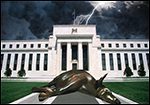
By Pam Martens and Russ Martens: September 12, 2024 ~ When the next megabank blows up from its derivative exposure, you can add the names Jamie Dimon and Patick McHenry to former Republican Congressmen Randy Hultgren and Kevin Yoder as four of the men who greased the skids for another derivatives banking crisis. (For our report on the role played by Hultgren and Yoder, see our 2021 report here.) Dimon and McHenry are the latest lead players in the disastrous history of derivative regulation in the U.S. Dimon is the Chair and CEO of the riskiest and largest bank in the United States, JPMorgan Chase. After his bank lost $6.2 billion gambling in derivatives in London in 2012 – using deposits from his federally-insured bank – Dimon would, to rational minds, seem like the least qualified candidate to be giving advice to his banking regulators on how much capital megabanks need … Continue reading

